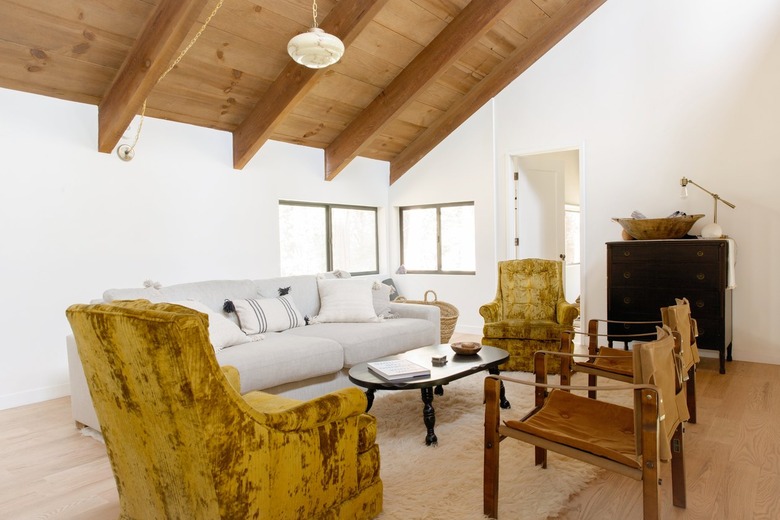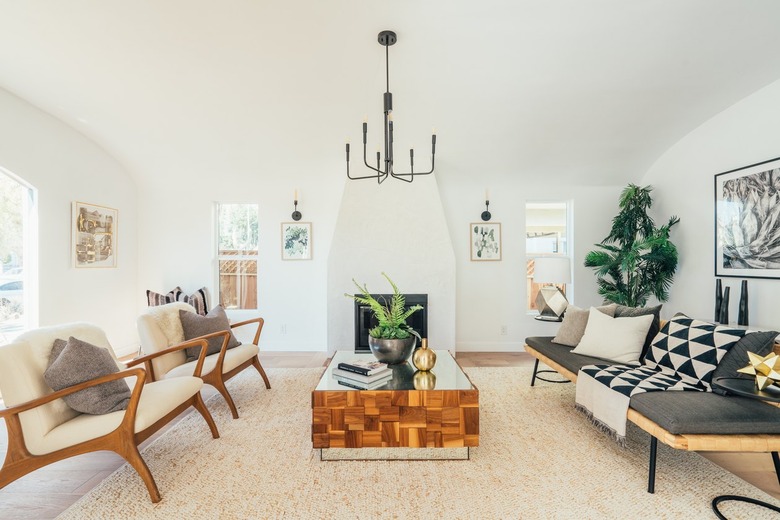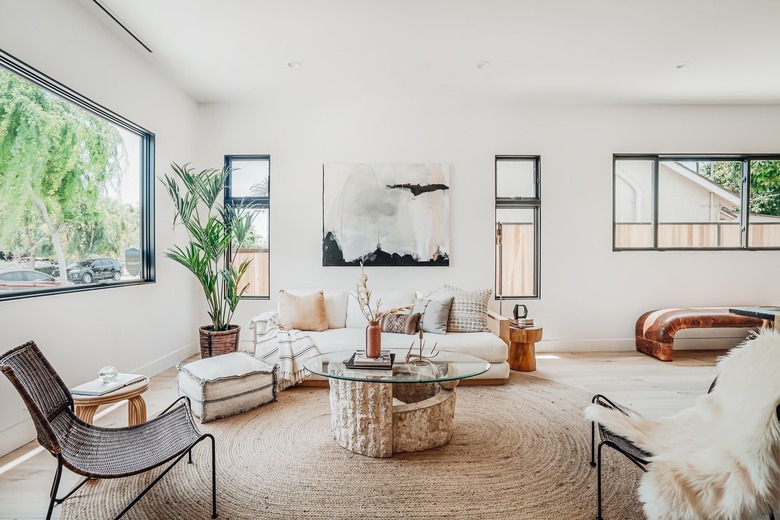Family Room Vs. Living Room: What Is The Difference?
We may receive a commission on purchases made from links.
The living room — it's usually the heart of most people's homes, even when they're on the smaller side. If you're lucky enough to have an abode with a larger footprint, you might have both a living room and a family room. But what is the actual difference between a living room and a family room?
We took the liberty of delving into the historical background of each space to solve this little mystery once and for all. Ahead we've laid out the main characteristics of both family rooms and living rooms so that homeowners will no longer have to contemplate this burning question.
Family Room Basics
Family Room Basics
If you've recently moved into a new home, you may have already begun pulling together some family room ideas. But what is a family room? Think of this space as an informal, relaxed room where you can hang out with your friends and family, of course, or you can simply get in your sweats and chill out on the couch solo or with your partner. In other words, it's the room in your house where you can truly let your hair down and enjoy snacks and movie marathons amid comfy furniture, tons of throw blankets and pillows, and perhaps some toy storage for your little ones.
Family Room History
A family room has a much more cheerful history than the macabre beginnings of the living room. The term "family room" arose in the wake of World War II, when the Baby Boom of the 1940s created a focus around all things family. The phrase first appeared in a 1945 book called Tomorrow's House by George Nelson and Henry Wright, in which they first coined the term "family room" as a place for family functions and not social gatherings.
Where Is the Family Room?
Unlike a living room, which tends to reside at the front of the home, a family room is tucked back elsewhere in the floor plan to be a bit more private when visitors arrive. Since it's usually found toward the back of a home, at times, a family room design also includes a sliding door to a patio or another way to access your backyard.
Fun Comes First
Whether you have kids or not, a family room is really meant for fun. These rooms often focus on entertainment centers and can even serve as a media room. To continue the casual feel, a comfy sectional will be right at home here, along with equally cozy armchairs. Although it should reflect the decor in the rest of your home, you should see the family room as an opportunity to take the formality down a notch, opting instead for a color scheme and paint colors that communicate a relaxed, and even lighthearted, vibe.
In Plain Sight
Are your little ones still fairly young? Or, perhaps you like to entertain while cooking? Opt for an open floor plan with the family room adjacent to the kitchen, so you can still keep an eye on the kiddos or join in on the fun during game nights.
Lastly, since a family room can be one of the higher traffic areas in the home, be sure to put down a big area rug — one that will protect the flooring below and provide extra traction underfoot.
Living Room Basics
Living Room Basics
Merriam-Webster's definition — "a room in a residence used for the common social activities of the occupants" — is pretty much spot-on for a living room. Also referred to as a great room or a lounge room in the U.K. and Australia, a living room tends to be a space devoted to entertaining guests.
Living Room History
Living spaces are a relatively new concept in residential design. The term "living room" first arose during the mid-19th century, when people began to create social spaces within their dwellings. Dedicated to entertaining, a living room was commonly referred to during the Victorian era as a "drawing room" or "parlor" (fittingly derived from the French word parler, which means "to talk"). In the late 19th and the early 20th century, these formal spaces took on an entirely new intent when the space was frequently dedicated to funeral proceedings and mourning, even going so far as being called the "Death Room."
Where Is the Living Room?
As mentioned, living rooms typically can be found at the front of the house, which denotes their nickname: "front rooms." Formal living rooms are frequently placed front and center so it's easy to receive guests and present the very best your home has to offer.
The Aesthetic
While a family room is all about relaxation and fun, a living room is more about quiet conversation with friends and family, cocktail hours, or after-dinner drinks paired with music. Placing the living room next to the dining room is ideal, since the space will lend itself to post-dinner activities. Anchor the room with a sleek coffee table and stylish chairs and treat it as a place to display some of your most treasured heirlooms and pieces of home decor.
Differences Between Family Rooms and Living Rooms
Differences Between Family Rooms and Living Rooms
If you have two living spaces in your home, a family room is meant for laid-back moments spent with your family, where the decorating ideas don't need to be formal and the surroundings are warm and welcoming. On the other hand, a living room is usually larger and set aside for social happenings and parties. And that's really the main difference between the two spaces.
When it comes to decorating each room, place your most comfortable, family-friendly, stain-resistant furniture pieces in the family room and display your most stylish items in the living room. The colors in a living room tend to lean more formal and serious, while the palette in a family room can be a bit more playful.
As you gather family room ideas, you might end up deciding that you want to transform your living room (the larger space) into the family room — especially if you have a big family or entertain often. Either way, when it comes down to the function of family rooms vs. living rooms, nowadays, it's really up to the homeowners to decide the best way to use each space.


